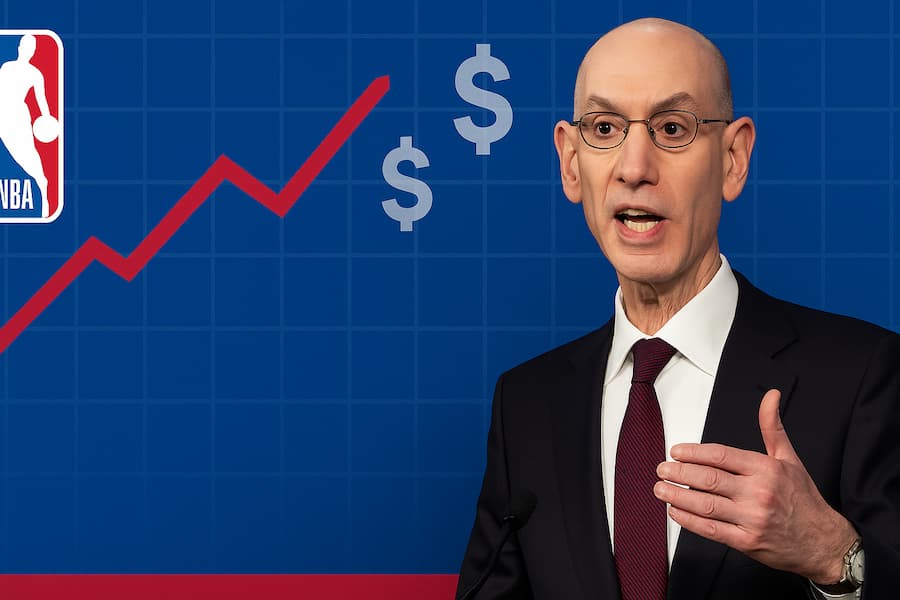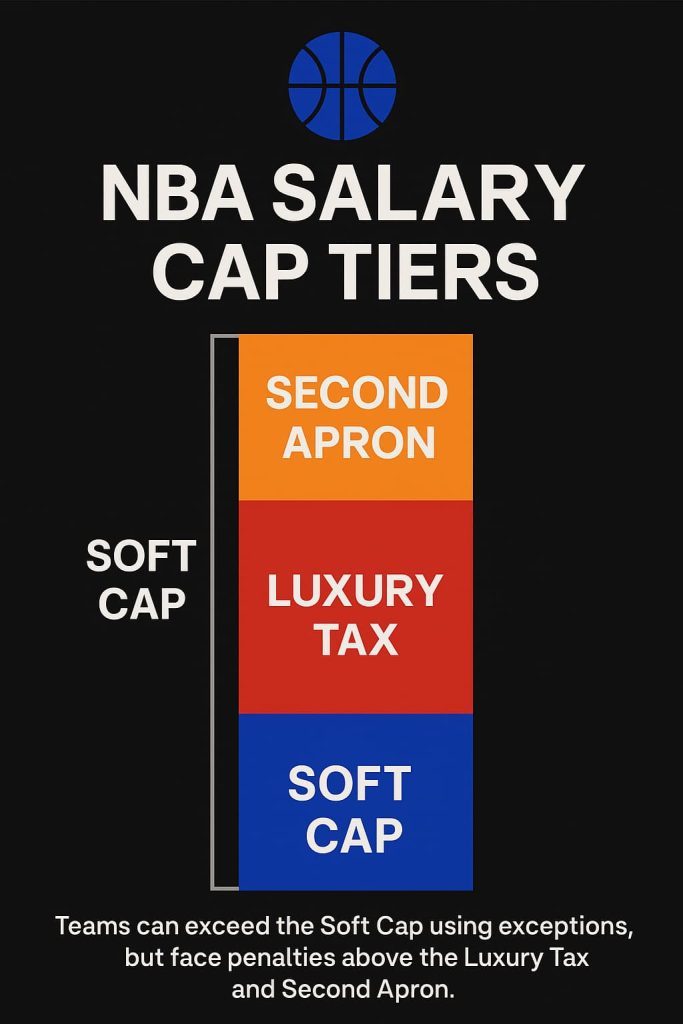
Adam Silver’s Push for Parity: Inside the NBA’s New Salary Cap Rules
The new rules are designed to end superteams? Here’s what’s changed, who’s affected, and why Adam Silver is betting the league’s future on it.
Summary (TL;DR)
The NBA’s latest salary cap overhaul introduces new spending thresholds, the First Apron and Second Apron, that limit how high-spending teams can build and maintain star-stacked rosters. The goal? Greater parity. But in shifting the competitive balance, the league may also risk losing the star-driven drama that fuels its ratings.
7 Champs in 7 Years: Coincidence? Not Quite.
When the Oklahoma City Thunder took home the 2025 NBA title, they became the seventh different champion in as many seasons. That’s never happened before, and it didn’t happen by accident.
Behind the scenes, NBA Commissioner Adam Silver had already begun rewriting the rules of team-building. In collaboration with the league’s 30 team owners, Silver introduced a new Collective Bargaining Agreement (CBA) that changed how much, and how flexibly, teams could spend.
His mission: make the NBA more competitive, even if it meant shortening the lifespan of championship contenders.
How the NBA Salary Cap Works (Before and Now)
The Basics: What Is a Salary Cap?
A salary cap is a limit on how much teams can spend on player salaries, designed to prevent rich franchises from buying titles. The NBA has a “soft” salary cap, which differs from hard caps (like the NFL) and cap-free leagues (like MLB). A soft cap allows teams to go over the spending limit, but imposes penalties when they do.
The Old System: A Soft Cap with Expensive Loopholes
- Salary cap: Set as a percentage of league revenue (about $140.6M for 2024–25)
- Luxury tax: Kicks in above the cap (~$170.8M), with escalating financial penalties
- Repeat offenders: Face steeper fines every year they exceed the threshold
For years, owners were willing to pay huge tax bills, like the Warriors’ $170M+ tax payments during their dynasty run, because winning brought big returns in franchise value.
The New Era: First & Second Apron and Why They Matter
The new CBA introduced two key thresholds above the luxury tax: the First Apron and the Second Apron, nicknamed the “Dynasty Destroyer.” These aren’t just financial penalties; they restrict how teams operate:

First Apron (~$195.9M in 2025):
- Cannot take back more salary than they send in a trade
- Cannot sign waived players who earned above the mid-level exception
- Trade flexibility is restricted
Second Apron (~$205.9M in 2025):
- No non-minimum free agent signings
- No aggregating salaries in trades
- Cannot trade first-round picks 7 years out
- Future 1st-rounders can be forced to the end of the draft if the team stays above the apron for 2+ years
- No cash used in trades
Reality check: This acts like a hard cap without being called one.
Why Adam Silver Made This Change
Silver’s goal is parity, not punishment.
He wants:
- More teams competing
- Fewer dynasties
- Less dominance by big-market, high-payroll franchises
And it’s working — at least on paper.

- The Celtics, fresh off a title, were forced to offload stars like Jrue Holiday and Kristaps Porziņģis
- The Nuggets traded Michael Porter Jr. to get under the apron
- The Suns, despite having a trio of stars, now face a roster ceiling they can’t afford to breach
Meanwhile, teams like the Thunder benefit from years of stockpiling draft picks; a “build, win, reset” model that Silver seems to be encouraging.
The Bigger Bet: Will Fans Actually Like This?
On paper, fans want parity. But history shows:
- Ratings spike when dynasties are in play (Warriors, LeBron-era Heat, Kobe’s Lakers)
- Superstars draw viewers, even when they’re hated
Silver is betting that balanced competition will win in the long run, even if that means fewer superteams and shorter championship windows.
My Take: What This Means for Teams and Fans
For front offices:
- Mistakes are costlier
- Flexibility is gone if you overspend
- Building a multi-year contender is now a race against the APRON clock
For fans:
- Your team has a shot (if they draft well)
- Stars might bounce between teams more frequently
- Expect more parity, but maybe fewer classic Finals rivalries
Conclusion
Adam Silver’s salary cap overhaul isn’t just a financial policy; it’s a vision for the league’s future. Whether it creates sustained competitiveness or alienates casual fans remains to be seen. One thing’s for sure: the age of superteams is fading, and the age of cap chess has just begun.
If it doesn’t work out? It could go down as a multi-billion-dollar mistake that disrupted the league’s identity.
Want to stay ahead of every shift in the league? From salary cap rule changes to championship shake-ups? Look up our frequently updated Sports News USA for smart, up-to-date coverage that keeps you in the know. In today’s sports, understanding the numbers is just as important as watching the game.